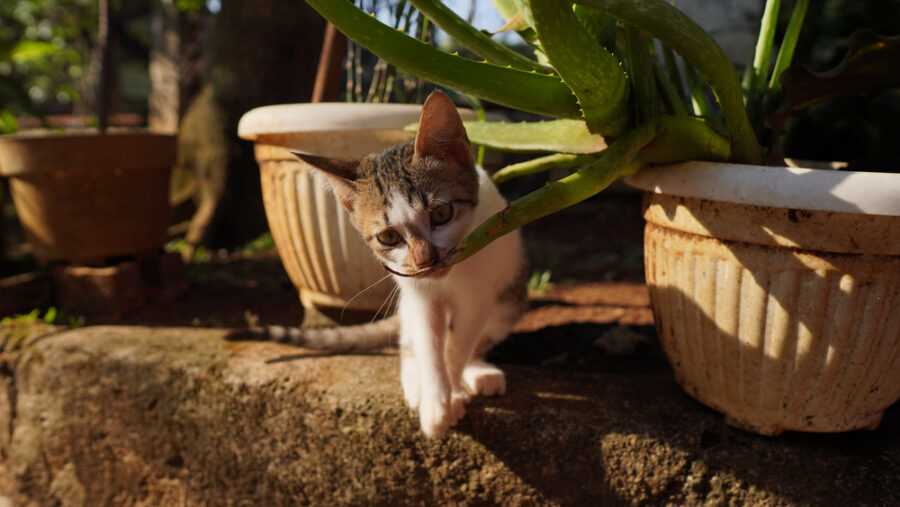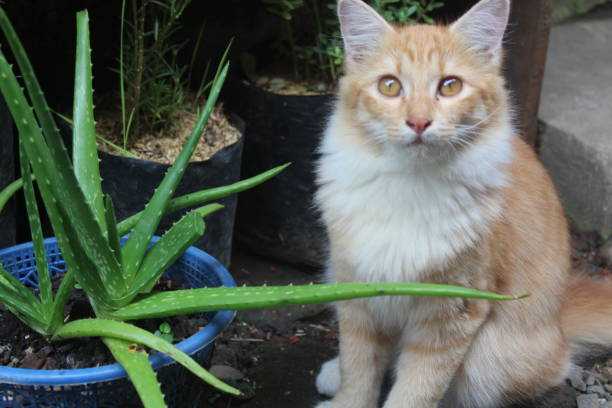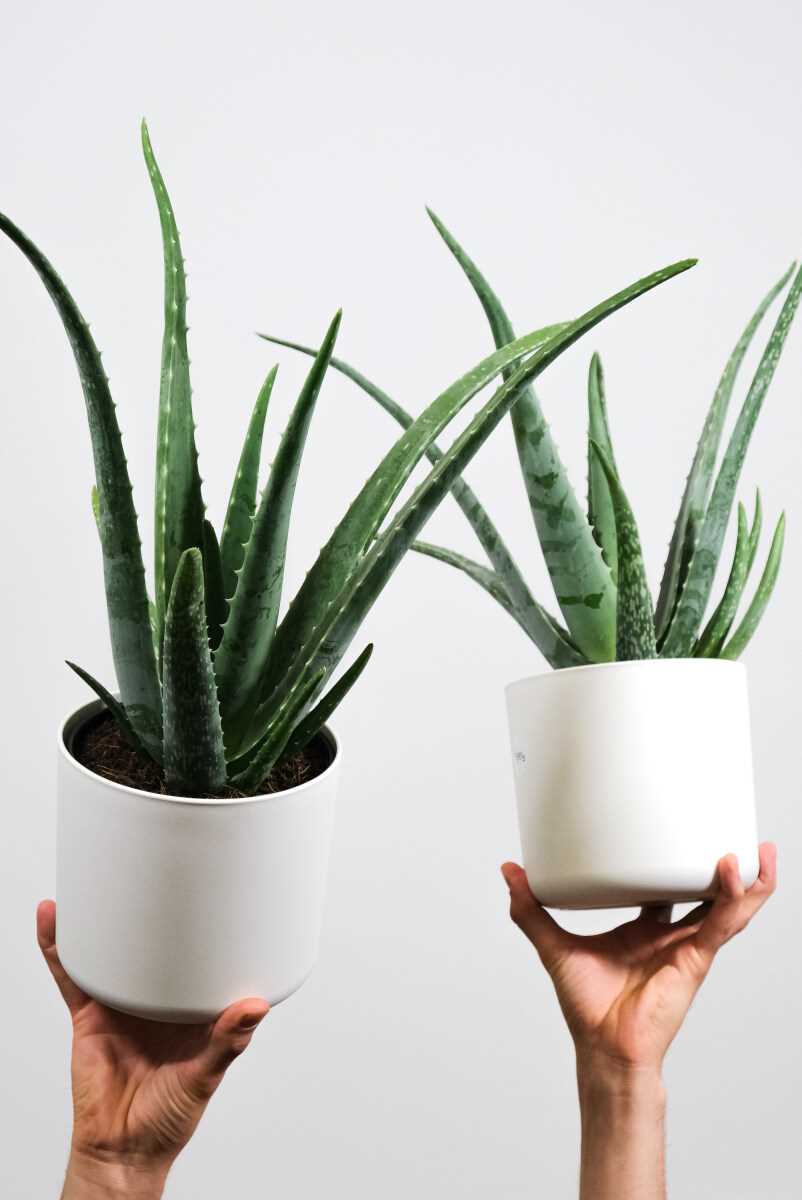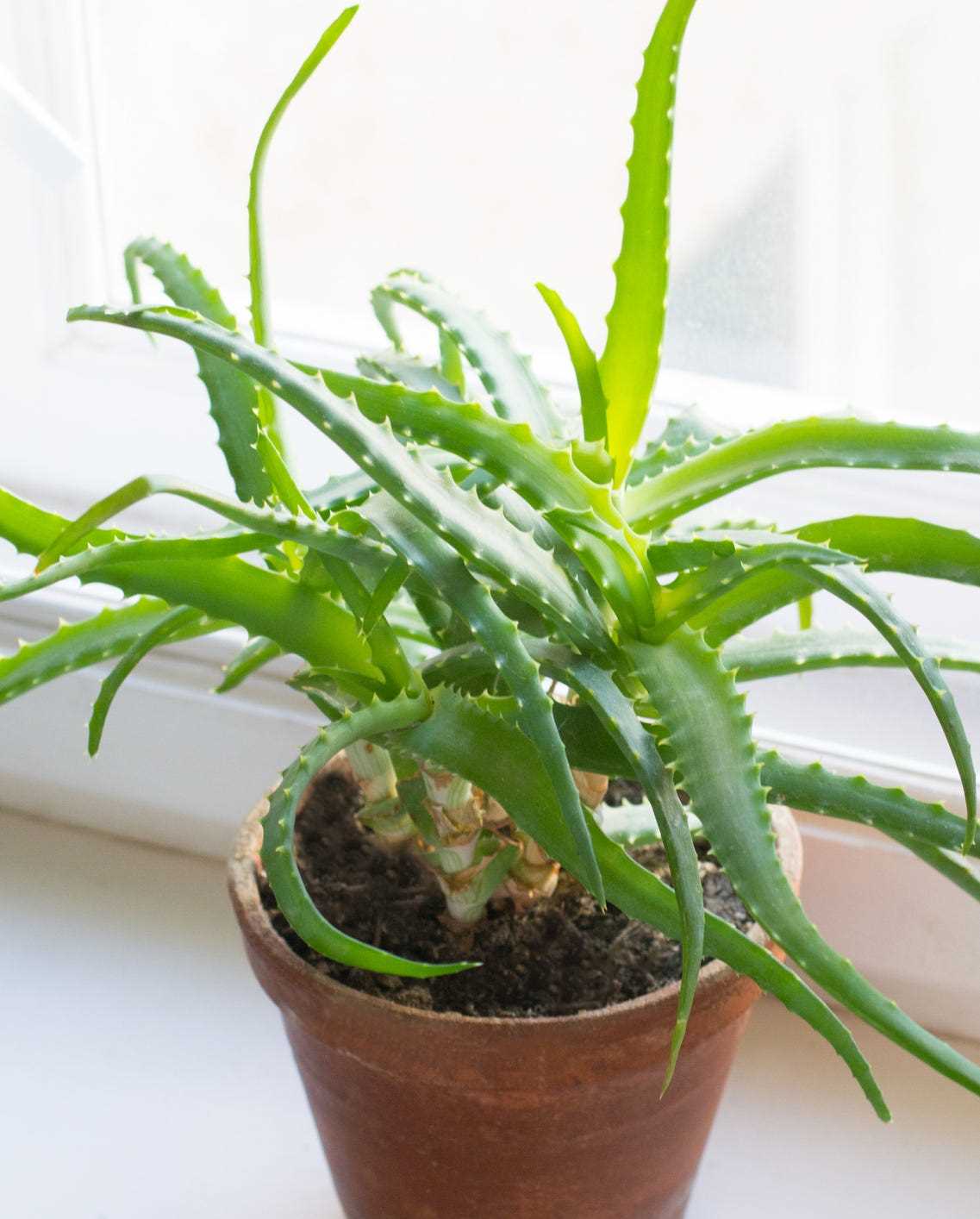As a Scottish Fold navigating life with my human, I must highlight that the succulent in question poses a significant risk to our furry companions. The compounds found in this plant can lead to gastrointestinal upset, lethargy, and even more severe reactions in cats. If you have this green friend at home, it’s best to keep it out of paw’s reach.
Consumption can result in symptoms such as vomiting, diarrhea, and tremors. These reactions stem from compounds like saponins and anthraquinones present in the plant. If your curious companion manages to nibble on it, immediate attention from a veterinarian is necessary.
For a safe home environment, consider opting for non-toxic alternatives like cat grass or catnip. These options not only keep us healthy but also provide an exciting chewing experience. Prioritizing our wellbeing ensures a happy and safe household.
Are Aloe Plants Harmful to Feline Friends?

Direct exposure to these succulents poses health risks to us furry companions. Ingestion can lead to gastrointestinal distress, causing symptoms like vomiting, diarrhea, and lethargy. If a curious kitty nibbles on the leaves, immediate attention is necessary.
Signs of Distress

Watch for warning signs such as drooling, lack of appetite, or unusual behavior. Quick action can make a difference. If any of these symptoms appear after contact, a trip to the vet is advisable.
Safe Alternatives
There are many safe options for home decor that won’t endanger my feline pals. Consider cat grass or spider plants, which are non-toxic and add greenery without risk. Always double-check plant safety before bringing them home!
Identifying Toxicity: Symptoms of Aloe Vera Poisoning in Cats
If you suspect ingestion of this succulent, look out for signs like vomiting, diarrhea, and loss of appetite. These symptoms can appear within a few hours after consuming any part of the plant.
Key Symptoms to Monitor

Watch for drooling, lethargy, or changes in behavior. In some cases, cats may experience abdominal pain, leading to a hunched posture or reluctance to move. If you notice any of these indicators, it’s crucial to act quickly.
Immediate Actions
Contact your veterinarian without delay. They may suggest bringing your feline companion in for an examination. Provide them with details about the situation, including the amount consumed and the time of ingestion. Quick action can make a significant difference in recovery.
Keep in mind that prevention is the best strategy. Ensure that any harmful plants are kept out of reach, safeguarding your furry friend’s health.
Safe Alternatives: Cat-Friendly Greenery to Consider
If you’re looking for safe options to liven up your home, consider these feline-friendly varieties:
- Catnip – This herb is a favorite among us felines. It provides stimulation and playful energy.
- Spider Plant – Not only is it non-toxic, but it also helps purify the air. A great addition to any room!
- Boston Fern – This lush green option is safe and adds a lovely touch to your space.
- Ponytail Palm – An interesting succulent that can thrive indoors and is completely harmless.
- Areca Palm – This palm variety is safe and can grow tall, making it a beautiful centerpiece.
These selections will not only enhance your surroundings but also keep your furry friends safe. If you’re curious about the costs associated with different breeds, check out how much are bengal cats worth.
Preventing Access: Tips for Keeping Felines Away from Aloe

Place those prickly greens out of reach. High shelves or hanging pots work wonders in deterring curious paws.
Use barriers. Decorative screens or plant stands can create a physical block, making it harder for me to investigate.
Consider citrus scents. Cats generally dislike citrus, so placing citrus peels or using sprays around the area can help keep me at bay.
Provide distractions. Interactive toys or scratching posts nearby can redirect my attention from the forbidden foliage.
Train with consistency. Positive reinforcement for staying away can effectively teach me boundaries regarding those toxic greens.
Regularly check your space. Make sure to remove any fallen leaves or debris that might attract my interest.
If you’re ever in need of advice on cat care, don’t hesitate to check out how much lactulose to give a cat.
As a Scottish Fold navigating life with my human, I must highlight that the succulent in question poses a significant risk to our furry companions. The compounds found in this plant can lead to gastrointestinal upset, lethargy, and even more severe reactions in cats. If you have this green friend at home, it’s best to keep it out of paw’s reach.
Consumption can result in symptoms such as vomiting, diarrhea, and tremors. These reactions stem from compounds like saponins and anthraquinones present in the plant. If your curious companion manages to nibble on it, immediate attention from a veterinarian is necessary.
For a safe home environment, consider opting for non-toxic alternatives like cat grass or catnip. These options not only keep us healthy but also provide an exciting chewing experience. Prioritizing our wellbeing ensures a happy and safe household.
Are Aloe Plants Harmful to Feline Friends?

Direct exposure to these succulents poses health risks to us furry companions. Ingestion can lead to gastrointestinal distress, causing symptoms like vomiting, diarrhea, and lethargy. If a curious kitty nibbles on the leaves, immediate attention is necessary.
Signs of Distress

Watch for warning signs such as drooling, lack of appetite, or unusual behavior. Quick action can make a difference. If any of these symptoms appear after contact, a trip to the vet is advisable.
Safe Alternatives
There are many safe options for home decor that won’t endanger my feline pals. Consider cat grass or spider plants, which are non-toxic and add greenery without risk. Always double-check plant safety before bringing them home!
Identifying Toxicity: Symptoms of Aloe Vera Poisoning in Cats
If you suspect ingestion of this succulent, look out for signs like vomiting, diarrhea, and loss of appetite. These symptoms can appear within a few hours after consuming any part of the plant.
Key Symptoms to Monitor

Watch for drooling, lethargy, or changes in behavior. In some cases, cats may experience abdominal pain, leading to a hunched posture or reluctance to move. If you notice any of these indicators, it’s crucial to act quickly.
Immediate Actions
Contact your veterinarian without delay. They may suggest bringing your feline companion in for an examination. Provide them with details about the situation, including the amount consumed and the time of ingestion. Quick action can make a significant difference in recovery.
Keep in mind that prevention is the best strategy. Ensure that any harmful plants are kept out of reach, safeguarding your furry friend’s health.
Safe Alternatives: Cat-Friendly Greenery to Consider
If you’re looking for safe options to liven up your home, consider these feline-friendly varieties:
- Catnip – This herb is a favorite among us felines. It provides stimulation and playful energy.
- Spider Plant – Not only is it non-toxic, but it also helps purify the air. A great addition to any room!
- Boston Fern – This lush green option is safe and adds a lovely touch to your space.
- Ponytail Palm – An interesting succulent that can thrive indoors and is completely harmless.
- Areca Palm – This palm variety is safe and can grow tall, making it a beautiful centerpiece.
These selections will not only enhance your surroundings but also keep your furry friends safe. If you’re curious about the costs associated with different breeds, check out how much are bengal cats worth.
Preventing Access: Tips for Keeping Felines Away from Aloe

Place those prickly greens out of reach. High shelves or hanging pots work wonders in deterring curious paws.
Use barriers. Decorative screens or plant stands can create a physical block, making it harder for me to investigate.
Consider citrus scents. Cats generally dislike citrus, so placing citrus peels or using sprays around the area can help keep me at bay.
Provide distractions. Interactive toys or scratching posts nearby can redirect my attention from the forbidden foliage.
Train with consistency. Positive reinforcement for staying away can effectively teach me boundaries regarding those toxic greens.
Regularly check your space. Make sure to remove any fallen leaves or debris that might attract my interest.
If you’re ever in need of advice on cat care, don’t hesitate to check out how much lactulose to give a cat.
As a Scottish Fold navigating life with my human, I must highlight that the succulent in question poses a significant risk to our furry companions. The compounds found in this plant can lead to gastrointestinal upset, lethargy, and even more severe reactions in cats. If you have this green friend at home, it’s best to keep it out of paw’s reach.
Consumption can result in symptoms such as vomiting, diarrhea, and tremors. These reactions stem from compounds like saponins and anthraquinones present in the plant. If your curious companion manages to nibble on it, immediate attention from a veterinarian is necessary.
For a safe home environment, consider opting for non-toxic alternatives like cat grass or catnip. These options not only keep us healthy but also provide an exciting chewing experience. Prioritizing our wellbeing ensures a happy and safe household.
Are Aloe Plants Harmful to Feline Friends?

Direct exposure to these succulents poses health risks to us furry companions. Ingestion can lead to gastrointestinal distress, causing symptoms like vomiting, diarrhea, and lethargy. If a curious kitty nibbles on the leaves, immediate attention is necessary.
Signs of Distress

Watch for warning signs such as drooling, lack of appetite, or unusual behavior. Quick action can make a difference. If any of these symptoms appear after contact, a trip to the vet is advisable.
Safe Alternatives
There are many safe options for home decor that won’t endanger my feline pals. Consider cat grass or spider plants, which are non-toxic and add greenery without risk. Always double-check plant safety before bringing them home!
Identifying Toxicity: Symptoms of Aloe Vera Poisoning in Cats
If you suspect ingestion of this succulent, look out for signs like vomiting, diarrhea, and loss of appetite. These symptoms can appear within a few hours after consuming any part of the plant.
Key Symptoms to Monitor

Watch for drooling, lethargy, or changes in behavior. In some cases, cats may experience abdominal pain, leading to a hunched posture or reluctance to move. If you notice any of these indicators, it’s crucial to act quickly.
Immediate Actions
Contact your veterinarian without delay. They may suggest bringing your feline companion in for an examination. Provide them with details about the situation, including the amount consumed and the time of ingestion. Quick action can make a significant difference in recovery.
Keep in mind that prevention is the best strategy. Ensure that any harmful plants are kept out of reach, safeguarding your furry friend’s health.
Safe Alternatives: Cat-Friendly Greenery to Consider
If you’re looking for safe options to liven up your home, consider these feline-friendly varieties:
- Catnip – This herb is a favorite among us felines. It provides stimulation and playful energy.
- Spider Plant – Not only is it non-toxic, but it also helps purify the air. A great addition to any room!
- Boston Fern – This lush green option is safe and adds a lovely touch to your space.
- Ponytail Palm – An interesting succulent that can thrive indoors and is completely harmless.
- Areca Palm – This palm variety is safe and can grow tall, making it a beautiful centerpiece.
These selections will not only enhance your surroundings but also keep your furry friends safe. If you’re curious about the costs associated with different breeds, check out how much are bengal cats worth.
Preventing Access: Tips for Keeping Felines Away from Aloe

Place those prickly greens out of reach. High shelves or hanging pots work wonders in deterring curious paws.
Use barriers. Decorative screens or plant stands can create a physical block, making it harder for me to investigate.
Consider citrus scents. Cats generally dislike citrus, so placing citrus peels or using sprays around the area can help keep me at bay.
Provide distractions. Interactive toys or scratching posts nearby can redirect my attention from the forbidden foliage.
Train with consistency. Positive reinforcement for staying away can effectively teach me boundaries regarding those toxic greens.
Regularly check your space. Make sure to remove any fallen leaves or debris that might attract my interest.
If you’re ever in need of advice on cat care, don’t hesitate to check out how much lactulose to give a cat.







